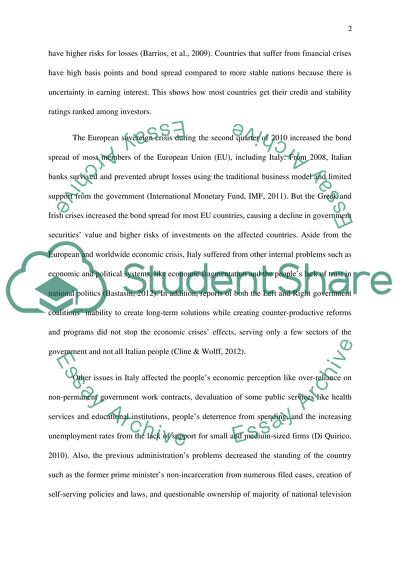Cite this document
(“The Italian Bond Spread Essay Example | Topics and Well Written Essays - 2750 words”, n.d.)
Retrieved from https://studentshare.org/history/1404264-the-italian-bond-spread
Retrieved from https://studentshare.org/history/1404264-the-italian-bond-spread
(The Italian Bond Spread Essay Example | Topics and Well Written Essays - 2750 Words)
https://studentshare.org/history/1404264-the-italian-bond-spread.
https://studentshare.org/history/1404264-the-italian-bond-spread.
“The Italian Bond Spread Essay Example | Topics and Well Written Essays - 2750 Words”, n.d. https://studentshare.org/history/1404264-the-italian-bond-spread.


